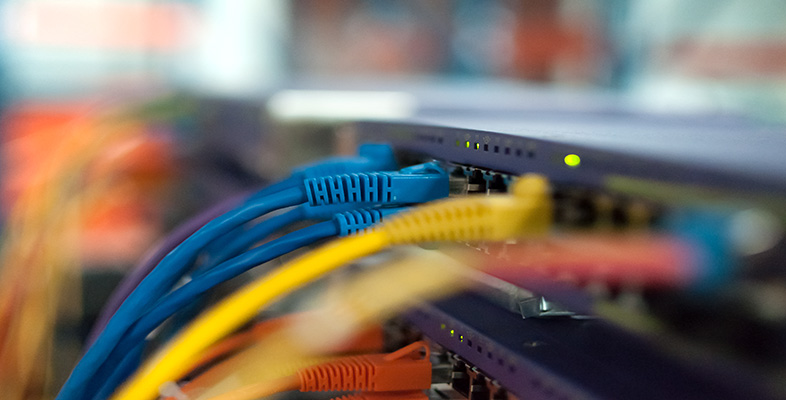3 Wired networks
3.1 Introduction
This section starts by broadly classifying different types of network, first by the nature of the communication links used to connect devices and then by a network's geographical spread. It then examines in more detail a network which uses a cabled communication link.
A networked device is often referred to as a node so we shall use this term in the sections that follow. A node is any device (for example, computer, printer, server) connected to a network, either as an end point (that is, a point where the communication link terminates) or some intermediary point (that is, a point which lies between end points on a communication link). To send data from one node to another there must be some kind of communication path between them. One option is for nodes to be physically linked to each other by a cable – for example, copper or fibre-optic cable. Each node must have a physical connection to the cable in order to send and receive data. Networks that use a physical communication link such as these are known as 'wired networks'. Wireless networks (which we shall discuss in the next section) have no physical connections between the nodes.
Networks can also be broadly classified according to their geographical spread: Local Area Networks (LANs) connect together a number of nodes within a single building or group of buildings situated close to each other. A LAN can connect together as few as two or three nodes or hundreds of nodes. You will also come across references to Personal Area Networks (PANs) which cover small areas such as a home, a single room within a home or even a car. A PAN is a type of LAN.
Wide Area Networks (WANs) connect together two or more LANs that are geographically separated. This is done by using links between LANs. A WAN could connect together all the LANs in offices of a national company and could even cross international boundaries.
This section will focus only on LANs. It will introduce you to the basic principles of operation of wired LANs, and in particular to a network technology known as Ethernet. Ethernet is the dominant technology used in LANs.
